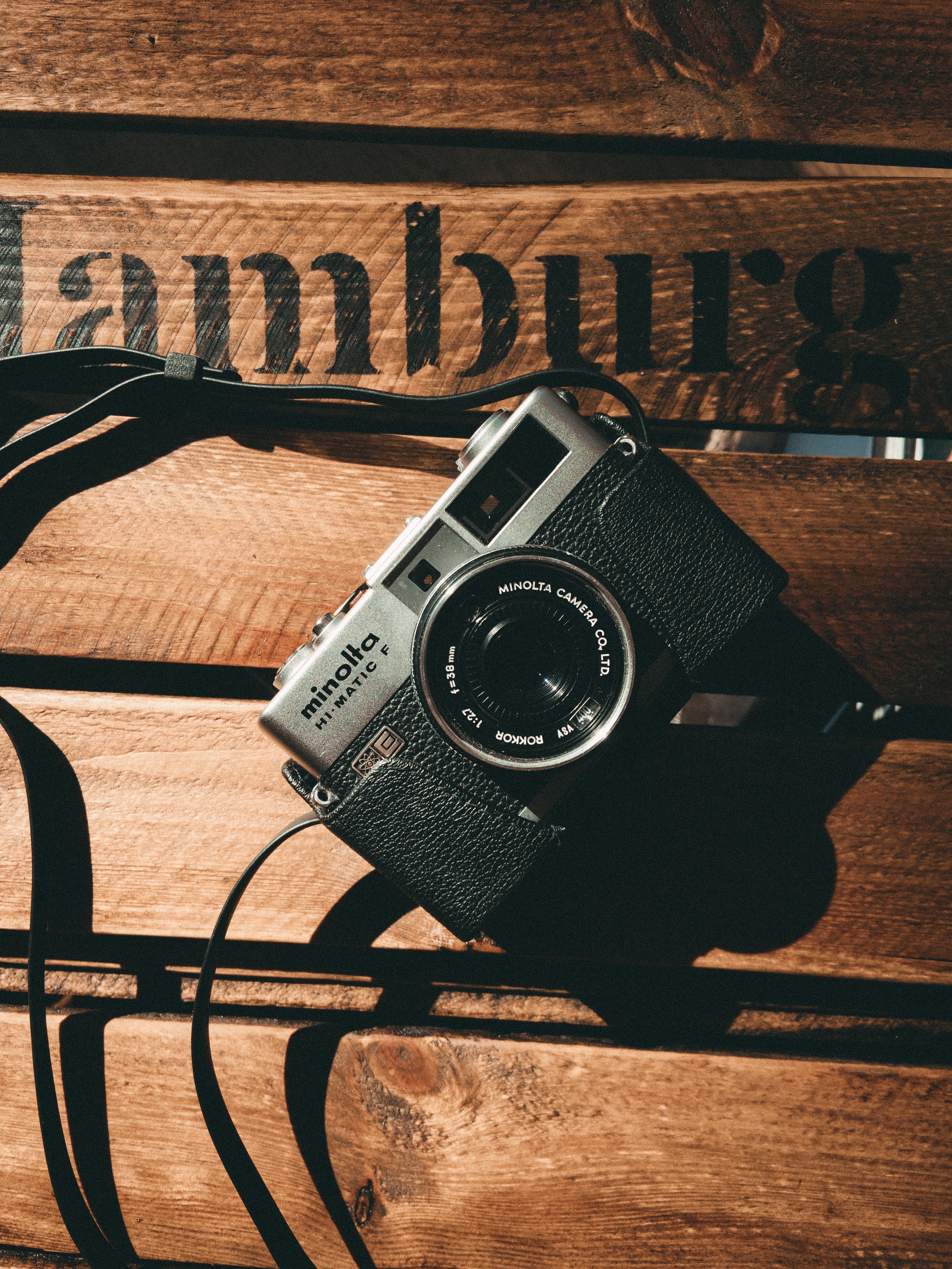Minolta Hi-Matic F
Brand: Minolta
Type: Analog Fixed Lens Rangefinder
Year of release: 1971
Crop Factor / Negative Size: 1x / 35mm
Max. Aperture: 2.7
Weight:
Condition of my copy: Nearly mint condition, working perfectly. Came with the original batteries, don’t know, when they’ll die
Overview
The Minolta Hi-Matic F is a small rangefinder camera with a fixed lens. For those of you, who are new to this (welcome aboard), a rangefinder camera doesn’t feature a mirror. Therefore, when looking through the viewfinder, you won’t see what the lens sees. What you see is a bright patch in the middle of your frame with an overlapping image of what you’re looking at. When focussing, this double image might eventually merge to one single image, meaning that this very object is now in focus. The viewfinder patch is synchronized with the lens to focus in real-time, probably by magic. The rangefinder type is popular among street photographers, because the lack of a mirror allows for comparably silent shooting (so no one notices you secretly taking pictures of them, creep) and a small, lightweight form factor. There are rangefinder cameras with interchangeable lenses, with the Leica M Series probably being the most popular one.
The Hi-Matic F however has a fixed lens, a 38mm Rokkor with a maximum aperture of f2.7. That said though, you don’t get to chose the aperture when shooting. Or the shutter speed. This camera is basically auto-only. That’s great, if you like to use it for quick capture-the-moment-shots, but it can be annoying, especially since you don’t know what aperture ore shutterspeed the camera chose.
Build Quality
Being a small camera with no professional/manual controls (except the ISO dial and focus) and therefore targeted for a consumer / entry level, the Minolta Hi-Matic F is surprisingly well built. Weirdly, it manages to feel cheap and and well made at the same time. The focus ring runs so smooth and without any friction, if it wasn’t for the patch in the viewfinder, I’d think it were broken. The front and the back lid are covered in faux leather decals and the body itself is made from aluminium. I’d trust it to surviv ethe one or other drop ( not that I have tested that). My copy came with a protective leather case, which doubles as a neck strap. This case seems to be rather well made as well.
Features
Due to being an auto-only camera, features are comparatively rare. Still, you get a hotshoe, a cable release socket, a flash sync port and a tripod mount. Also, the lens barrel features a dial to control the flash intensity relative to the distance to the subject. The front of the lens also features the lightmeter (so no TTL metering) and a dial to set the ISO.
Operating the camera requires two PX640 batteries, which aren’t around anymore. Apparently, LR44 batteries do the job as well, but the higher voltage can affect the lightmeter. The shutterspeed appears to be ranging from something between 1/15th and 1/30th up to 1/500th. If the situation requires anything faster or slower, a red light will flash up in the finder to warn you of over or under exposure. All in all, the lightmeter and the automatic settings know their craft rather well and perform satisfyingly.
Should you buy this?
If you want something with the ease of a point and shoot with the elegance and quality of a rangefinder without shedding an arm and a leg, yes. It’s durable, lightweight, chic and both the lens as well as the automatic controls deliver good, though not outstanding results. If you get the chance to get one for little money, buy it. If you’re hoping to get an in-between a Contax T2 and a Leica M6, don’t buy it, it’s close to neither of them.
Sample images below shot on Kodak Ultramax












